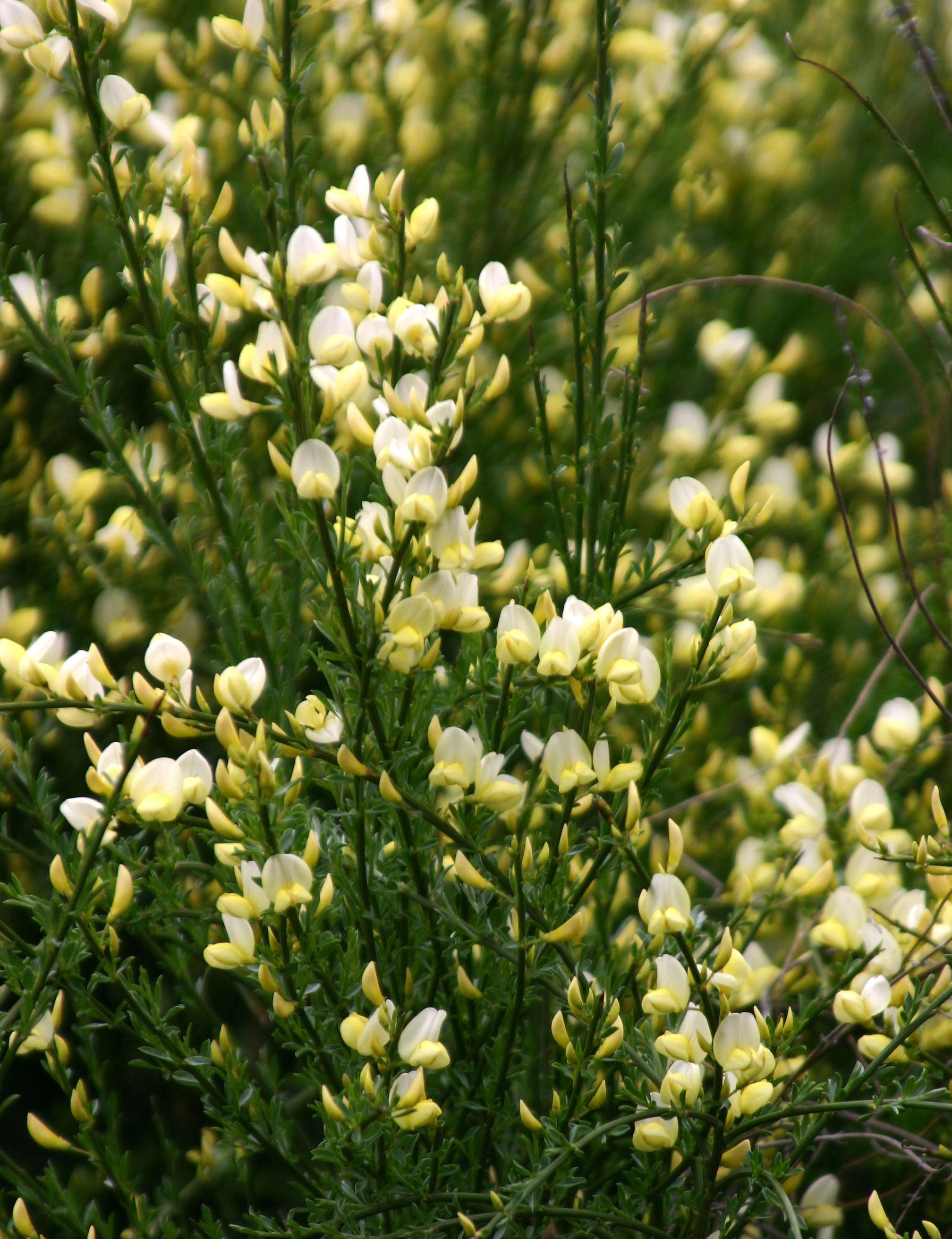

Immediately discard these branches, particularly if they have insect damage or if you see signs of disease, to avoid spreading the damage to the plant or other areas in your landscape. If you notice broken, misshapen, dead, or diseased branches, remove them at any time. If you prune in autumn or winter, you will decrease the number of flowers Scotch Broom produces the following year. Do this at the right time of the year to ensure masses of blooms the following season. Because most varieties of Scotch Broom bloom on old wood, any pruning should be done just after flowering, whether to remove scraggly or damaged stems or for shaping and aesthetic purposes. Depending on the variety, Scotch Broom shrubs bloom in spring or early summer. Only prune Scotch Broom directly after it flowers. Be sure to use a 45-degree angle so water runs off the stem to avoid rot. Use sharp sterilized pruners, and cut the plant back by 1/3 to encourage fuller, lush foliage. In summer, branches can be trimmed to maintain their shape or to remove spindly, dead, or crossing branches. Only prune Scotch Broom directly after flowering. Flowers appear on old wood, so pruning at the wrong time could delay or even prevent blooming. Do not spray plants with seed weevils.When pruning Scotch Broom, timing is key to ensure prolific flowering the following year.

You can pop open a mature, brown Scotch broom seedpod to see if seed weevils are working. They can destroy up to about 80 percent of the broom seed inside the pods. The Oregon Department of Agriculture has released a species of seed weevil whose larvae feed on the developing Scotch broom seedpods. Scientists continue to investigate biological control possibilities for Scotch broom and other noxious weeds. You can be liable for injury or damage from herbicide use. Remember to wear protective clothing, read the label and follow instructions, and be cautious. If you are unsure about the use of herbicides, contact your county Extension educator. "Be careful when using herbicides to minimize drift and injury to non-targeted plants," Hulting warned. Avoid spraying when plants are blooming the flowers can prevent thorough coverage to plant tissues. Several broad-spectrum herbicides, including glyphosate and imazapyr, can be effective in controlling Scotch broom infestations. Since Scotch broom seed lasts for years in the soil, vigilance is necessary to prevent reinvasion by new seedlings. Keep an eye out for seedlings each spring and pull them up, roots and all, while they are small.Cut it back to the ground each year before it sets seed.If you find Scotch broom on your property, Hulting recommends: The publication, Scotch Broom (PNW 103), which has color photos, identification information and control measures, is available online. OSU Extension recommends that you learn to identify Scotch broom and the other non-native broom species in the Pacific Northwest that have the potential to become weedy. "Native trees (such as Douglas-fir or red alder), shrubs (such as woods rose, currants and snowberry) and native grass mixes can help prevent and slow Scotch broom infestations." "Quickly re-vegetate disturbed sites with fast-growing, competitive native plants to limit Scotch broom spread," he said. Care should be taken not to transport soil that is contaminated with Scotch broom seeds. What can you do to control this noxious weed? Prevention is the best method, especially in areas where the ground and other plants have been disturbed by overgrazing or development, Hulting said. Scotch broom costs Oregonians an estimated $40 million per year in lost timber revenue and control efforts. "Its invasive habit and economic costs have landed Scotch broom on the State Weed Board's list of noxious weeds, along with its relatives French, Portuguese and Spanish brooms and gorse," Hulting said. The woody shrub establishes quickly in disturbed areas, according to Andy Hulting, a weed specialist for the Oregon State University Extension Service. Later it was used to prevent erosion and stabilize banks and sand dunes. Scotch broom was introduced from Europe as a garden ornamental by early settlers of the Pacific Coast. – Although admired for its yellow blooms, the Scotch broom shrub has become an invasive species throughout the Pacific Northwest, where it competes with native plants and forms dense stands that are difficult to manage and remove.


 0 kommentar(er)
0 kommentar(er)
